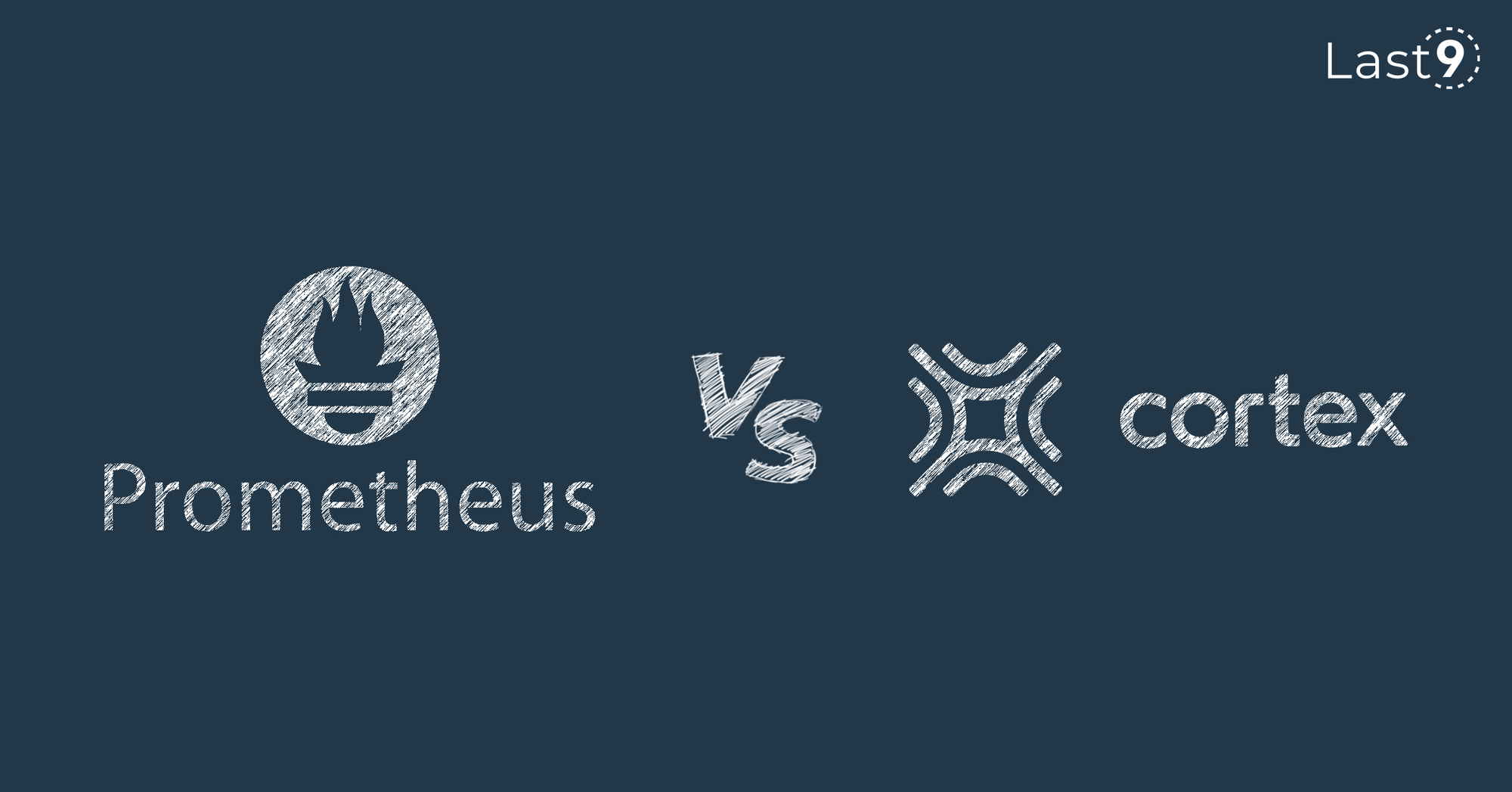Nov 9th, ‘23/6 min read
OpenTelemetry vs. OpenCensus
What are OpenTelemetry, and OpenCensus and how to migrate from OpenCensus to OpenTelemetry

OpenCensus and OpenTelemetry are two popular observability solutions. Read on to understand the similarities, differences, and capabilities of both.
What is OpenCensus?
OpenCensus is an open-source observability framework with instrumentation tools, metrics, and trace collection libraries. It provides a metrics library that allows developers to capture various metrics types, a tracing library for end-to-end visibility into request flow across services in distributed systems, and vendor-neutral exporters compatible with different observability backends.
OpenCensus also provides an optional central exporter service—OpenCensus Agent—which aggregates telemetry data and sends it to pre-configured exporters.
OpenCensus Features
Some of OpenCensus’ features are explained below.
APIs
OpenCensus has an array of vendor-neutral APIs—including stats, tracing, and tags—for defining and capturing (custom) metrics and distributed traces and adding spans and other metadata to traces for contextualization.
Context Propagation
As OpenCensus enables the tracking and correlating of telemetry data across different components and services, it also ensures that relevant contextual information—such as request or session IDs—remains attached to the data.
Sampling
OpenCensus’ sampling feature provides statistically accurate data processing, filtering, and grouping to ease navigation during analysis. Via sampling, developers can configure data collection rates and ensure that collected data does not throttle the telemetry pipeline. These enable OpenCensus to limit telemetry traffic, balance data collection costs, and reduce storage costs.
Exporters
OpenCensus exporters automatically transform and send telemetry data to users’ preferred telemetry backends—such as Prometheus, Zipkin, and Jaeger—for visualization and analysis. While OpenCensus exporters support various backends, the backend chosen will determine the instrumentation language and the telemetry type to be exported.
Language Support
OpenCensus offers libraries and SDKs for multiple programming languages, including Java, Go, Node.js, Python, PHP, C/C++, and Erlang, allowing developers to instrument applications regardless of the language of your codebase.
What is OpenTelemetry?
OpenTelemetry (OTel) is an open-source framework that combines features from OpenTracing and OpenCensus into a fit-for-all framework for telemetry data collection and export.
OpenTelemetry Features
OpenTelemetry incorporates OpenCensus’ most important features (discussed earlier) and adds the following for improved observability.
Automatic Instrumentation
With OTel, you can initialize signal providers to capture metrics, traces, and logs—as well as accompanying metadata—without modifying the application codebase.
Logging
Beyond metrics and traces, OTel allows you to capture logs to provide contextual information on application errors and events to enhance your understanding of application behavior.
Language-Specific SDKs
OpenTelemetry provides Software Development Kits (SDKs) and instrumentation libraries that support popular programming languages, making it easier to instrument applications for telemetry collection and more.
Context Propagation
OpenTelemetry enables automatic context propagation, meaning that when a request flows through microservices, the context (including trace and span IDs) is automatically propagated.
Extensibility
OpenTelemetry offers extension points and a flexible architecture that supports custom instrumentation and exporters, making it adaptable regardless of application requirements and environments.
Comparing OpenCensus with OpenTelemetry
While OpenCensus and OpenTelemetry share certain features and goals, they have essential differences, as presented in the table below.
| Differentiators | OpenCensus | OpenTelemetry |
|---|---|---|
| Scope and Support | Focused primarily on capturing metrics and traces. | Captures metrics, logs, and distributed traces. Supports automated context propagation and semantic conventions. |
| Context Propagation | Supports manual context propagation. | Supports automatic context propagation for easier distributed tracing. |
| Flexibility and Extensibility | Offers flexibility with its custom metrics, exporters, and samplers. It is not extensible. | Highly flexible and extensible; provides a robust plugin system, and you can build and use your own extensions. |
| Integration and Backward Compatibility | Now incorporated into OpenTelemetry. | Offers backward-compatibility with OpenCensus to aid cross-framework migration. |
Choosing between OpenCensus and OTel
Choosing between OpenTelemetry and OpenCensus is a question of security and functionalities because, as of July 2023, OpenCensus is no longer maintained and any security vulnerabilities that are found will not be patched. Additionally, OpenCensus has laid the foundation for instrumenting metrics and traces, while OpenTelemetry builds upon that foundation to provide a more comprehensive observability solution.
If you are starting a new project or currently using OpenCensus, consider adopting or migrating to OpenTelemetry, as it offers a secure, comprehensive, and future-oriented approach to observability in distributed systems.
Migrating from OpenCensus to OpenTelemetry
If you are currently using OpenCensus and want to migrate to OpenTelemetry, below is an overview of the migration steps and the language version support.
Language Version Support
For easy migration, OpenTelemetry provides backward compatibility bridges for several programming languages. Below is an overview of the language version supports for OpenCensus and OpenTelemetry.
| Language | OpenCensus | OpenTelemetry |
|---|---|---|
| Java | 7+ | 8+ |
| Go | 1.11+ | 1.13+ |
| Python | 2.7 and 3.4+ | 3.6+ |
| JavaScript | ES6 | ES7, ES8+ |
| Node.js | 4+ | 8+ |
| PHP | PHP 5.6 | PHP 7 |
| C++ | 11 | 11 |
| Ruby | 2.2 | 2.4 |
| .NET | Framework 4+, Core 2.1+, Standard 2.0+ | Same |
Migration Overview
To migrate from OpenCensus to OpenTelemetry, follow the steps below. Code samples are provided using the Docker version.
Step 1: Update Dependencies
Open your project's dependency file (e.g., pom.xml for Java, go.mod for Go) and replace OpenCensus dependencies with corresponding OpenTelemetry dependencies. For Java with Maven, update your pom.xml:
<!– OpenCensus -->
<dependency>
<groupId>io.opencensus</groupId>
<artifactId>opencensus-api</artifactId>
<version>0.27.0</version>
</dependency>
<!-- OpenCensus Exporter -->
<dependency>
<groupId>io.opencensus</groupId>
<artifactId>opencensus-exporter-trace-stdout</artifactId>
<version>0.27.0</version>
</dependency>
<!-- Replace with OpenTelemetry dependencies -->Step 2: Replace Code Usage
Update your code to use the OpenTelemetry API and replace the OpenCensus code with equivalent OpenTelemetry calls.
For Java:
// OpenCensus
import io.opencensus.trace.Tracer;
import io.opencensus.trace.Tracing;
// ...
Tracer tracer = Tracing.getTracer();
tracer.spanBuilder("my-span").startSpan().end();
// Replace with OpenTelemetry
import io.opentelemetry.api.trace.Tracer;
import io.opentelemetry.api.Trace;
import io.opentelemetry.api.OpenTelemetry;
// ...
Tracer tracer = OpenTelemetry.getTracerProvider().get("your-instrumentation-library-name");
tracer.spanBuilder("my-span").startSpan().end();For Go:
// OpenCensus
import "go.opencensus.io/trace"
// ...
tracer := trace.New("your-instrumentation-library-name")
span := tracer.StartSpan("my-span")
defer span.End()
// Replace with OpenTelemetry
import (
"go.opentelemetry.io/otel"
"go.opentelemetry.io/otel/trace"
"context"
)
// ...
tracer := otel.GetTracerProvider().Tracer("your-instrumentation-library-name")
ctx, span := tracer.Start(context.Background(), "my-span")
defer span.End(ctx)For Python:
# OpenCensus
from opencensus.trace import Tracer
# ...
tracer = Tracer()
with tracer.span(name="my-span"):
pass
# Replace with OpenTelemetry
from opentelemetry import trace
from opentelemetry.sdk.trace import TracerProvider
from opentelemetry.trace import Tracer
# ...
trace.set_tracer_provider(TracerProvider())
tracer = trace.get_tracer("your-instrumentation-library-name")
with tracer.start_as_current_span("my-span"):
passStep 3: Update Instrumentation
Update custom instrumentation or exporters to corresponding OpenTelemetry API and exporters using language and case-specific code.
Update Imports:
Replace imported OpenCensus packages with equivalent OpenTelemetry packages. For example, in Java, you might replace io.opencensus.trace.Tracer with io.opentelemetry.api.trace.Tracer.
Replace API Calls:
Update instrumentation code to use equivalent OpenTelemetry API calls by replacing method calls, function invocations, or class instantiations with their OpenTelemetry counterparts. For example, replace Tracer.startSpan() with tracer.spanBuilder().startSpan().
Configure Exporters:
Update custom exporters set up in your instrumentation code with compatible OpenTelemetry exporters by modifying configuration settings or updating the initialization code for the exporters.
Step 4: Test and Verify
Run your application with the updated code and ensure the desired telemetry data is captured and exported successfully to your chosen backend.
Conclusion
OpenCensus and OpenTelemetry offer potent methods for collecting and analyzing telemetry data in modern distributed systems. However, OpenCensus is now deprecated, while OpenTelemetry is the recommended observability platform, as it captures more telemetry data types, offers an extensible, comprehensive observability solution, and has ongoing support.
FAQs
Can OpenCensus and OpenTelemetry be used together?
Yes, but this is not recommended since the former has been deprecated. Moreover, OpenTelemetry supports legacy systems instrumented using OpenCensus and offers an easy-to-use migration path for OpenCensus users.
How does OpenTelemetry differ from other observability frameworks?
OpenTelemetry offers a more standardized and overarching approach to collecting telemetry data. It provides a unified set of APIs and instrumentation libraries and supports several observability backends.
How does OpenTelemetry handle security and privacy concerns?
OpenTelemetry has massive industry support, enabling it to follow industry-standard security practices. It supports secure telemetry data transmission via encryption, provides authentication and access control mechanisms, and supports redaction and scrubbing of sensitive information to ensure privacy.
What are the benefits of using OpenTelemetry in a microservices architecture? And does it support cloud environments like Kubernetes and AWS?
OpenTelemetry allows you to trace requests across distributed systems. It also supports Kubernetes, AWS services, Google Cloud Platform, Azure, and other cloud providers. These integrations allow you to collect telemetry data from services running in these environments and gain insights into their performance.
Contents
Newsletter
Stay updated on the latest from Last9.
Handcrafted Related Posts

Prometheus vs. Cortex
Comparing Prometheus vs. Cortex - Scalability, Cost, Performance, Known Weaknesses
Last9

Reliability Tools
A guide through the most popular DevOps and SRE tools for building your reliability stack.
Abhi Puranam

A case for Observability outside engineering teams
Observability is being built by engineers for engineers. In reality, o11y is for all.
Aniket Rao